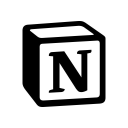My Google Sheets Tool Has 128K Downloads And 1,000+ Paying Users
Hi guys, my name is Alexandru Dumitru, I am the founder of FileDrop, a file manager for Google Sheets, Docs, and Slides but it does so much more.
I created FileDrop 2 years ago for my own needs when I was building a SAAS product. I was using Google Sheets as a bug tracker and I always had to share images (product changes etc.) in cells and comments with my programmer and I hated the process. It was taking a lot of time for a simple process.
I searched for a solution that would fit my needs and actually, there was nothing like that so I built it myself. I published it in the Google Workspace Marketplace and slowly others used it and paid for it, It felt incredible to know others need it and are willing to pay.
Slowly we add new features that would save users an incredible amount of time. Now our users are from universities like Stanford and Columbia, but also from companies like Sotheby’s, Shopify, or HBO. FileDrop is used by film studios, manufacturing companies, schools and universities, e-commerce stores, and in many other industries.
We have over 120,000 installs and we are growing daily.

What's your backstory and how did you come up with the idea?
I am an entrepreneur, I’ve built and sold a few companies along the way, and many projects failed also. I started my first business when I was 20 years old and since then I have been in different industries mainly related to services and graphic design. In the last 3 years, I’ve been focusing on building a portfolio of software products under the HeadwayApps umbrella.
Building (good) software is hard, I had a little experience building WordPress themes and plugins in 2012, but we gave up for some reason, which in retrospect was a mistake considering how popular WordPress is now.
My first software product was an image editor for e-commerce stores (which I sold) that used AI to enhance images, create scenes, improve colors, lightning, and so on. That didn’t work as expected and was a challenge to build. While working on this project I started using more Google Sheets and I’ve discovered add-ons and the Google WorkSpace Marketplace.
Trying to solve my little problem with managing images in Sheets I started learning more about Google Apps script and how to build small apps for different processes inside Google Sheets or Docs.
I hired someone to help me with the development of an app that can handle the files and do a few different things to make it usable for a larger audience. It took about a month for the first version but it did the job. We launched in the marketplace and the beauty of marketplaces like this is that if you build something people need it will bring traffic and installs. Along with that is your job to convert this to money.
At the same time when building FileDrop, I started 2 other software products, I just sold one of the older projects, and the money from that all went into developing the new software business, development, and marketing. I hired a couple of people per project to write content and marketing to see which project would work and gain traction and focus on that.
I think in the first 3 months we gathered around 12,000 installs and very few started paying for the add-on. The amount we were charging was only $3 per user, we still have a few customers that are still paying that for the Pro version.
For business apps and software you need to figure out how much a user is willing to pay to solve that specific problem in comparison with other solutions (if any) and the amount of time saved.
Take us through the process of building the first version of your product.
The first version was a simple drag and drop interface with access to the Drive and a Library tab. We had a simple settings panel with options to insert the files as images or as links.
I was keeping this as a side project as I didn’t believe that it could become something bigger, I wasn’t seeing how people could use it.
But soon I discovered that there were many use cases I didn’t know about. Accountants, photographers, legal departments, and so on started using it and some contacted us requesting different features, asking if this or that was possible to be achieved with FileDrop.
And once that feedback started to come in I started implementing some of the features that could benefit other users.

A mistake I made at the beginning was pricing and I am still having a hard time with that. We charged a very small amount, $3 per user per month. That cannot get great returns unless you sell tens of thousands of subscriptions. Unless you are targeting millions of users there is no way this would work, it only makes sense for consumer apps.
For business apps and software, you need to figure out how much a user is willing to pay to solve that specific problem in comparison with other solutions (if any) and the amount of time saved.
The next features were built by getting feedback from early users and using other apps that were solving adjacent problems. That meant a lot of testing and tweaking and some were great, others not so much. It doesn’t matter if you add 1000 features if your users only use 3 or 4.
Another important step in solving software problems is creating a great deal of documentation for the features you build. Sometimes users need guidance to get the hang of it and your documentation must be easily accessible.
Describe the process of launching the business.
Launching a software product is incredibly hard now, especially if you don’t have an audience, I don’t. I don’t tweet or blog, I tried but like many others, I didn’t keep going so I lost interest.
It’s the one thing I would do differently, gathering a following increases the surface area of luck when launching a new venture.
You are competing not necessarily with other software in your niche but the attention you can attract to your product is limited. Your users are bombarded with ads on all mediums, so a great distribution of your product and your marketing materials is a must.
When I launched FileDrop I created a few demo videos that show what the product does and its most basic functionality. I was only following uses that had this specific problem: add files to a Google sheet. Mostly this was PDFs and images. So my only focus was to create content around these topics.
I’ve created tutorials and blog posts about this and how easily FileDrop solves this issue. I also started a Google Ads campaign targeting this problem.
The thing was that the searches were (and still are) very few. That’s one of the reasons I kept FileDrop as a side project for so long, I only took it more seriously when we had like 30-40k installs.
Since launch, what has worked to attract and retain customers?
What I did and worked on was to reach out to some blog posts that had solutions to this problem but were outdated. I stumbled on this post and Phillip updated the post (thank you Philip) with my solution, and it started bringing 20-30 visitors per day which was amazing at the beginning because this was the no 1 result in Google.

Creating video tutorials has helped a lot as it attracted people searching directly on YouTube and it also helped with creating video ad campaigns. As you can imagine my videos are ranking at the top of the search results but they do the job.
Along the way, I discovered product led marketing which is a great way of building and growing a software company. I am still a long way but I managed to implement systems that help make some of the tasks easier.
Having the product in the marketplace is a good thing as it brings new installs every day.
Momentum is what makes businesses grow. Momentum is in everything, not just in delivering great features to your customers, but also in marketing and sales and letting the people know about what you are building.
How are you doing today and what does the future look like?
At the moment we are adding features slowly and we are trying to improve the ones we already have.
We have around 128k installs and I want to focus more on selling to teams, focus more on distribution, and also on converting free users to paid. Out of those we’ve had a bit over 1000 paying customers. We need to deliver more value and make the add-on sticker so users use it more in their day-to-day tasks.
I’ve also hired 2 new team members and we are slowly building a new marketing team to increase the focus on social media.
The product with the best distribution wins and that’s what I want to focus on in 2024. I’ve started doing demos of the product with anyone who wants to learn more about FileDrop and discover both what customers want and how they are using it.
Through starting the business, have you learned anything particularly helpful or advantageous?
Although this is software for desktops I should have focused more on advertising on mobile, many Google Sheets/Excel Instagram and TikTok accounts have a lot of followers and we are non-existent on social media other than YouTube.
We’ve added some great AI features inside FileDrop but they were underpromoted and I want to bring more attention to that.
What I did well was focus on great customer service, and I try to answer as quickly as possible to any user. If there is an issue I managed to quickly fix most of the problems in under an hour. I got great feedback and I want to continue offering the same level of service.
Momentum is what makes businesses grow, and in the last 2-3 months I’ve lost it a bit but I am getting back there. Momentum is in everything, not just in delivering great features to your customers, but also in marketing and sales and letting the people know about what you are building.
Being a solo founder is harder, most of my businesses were run by other people and it takes a lot of mental power to overcome some of the challenges. It helps that I have a lot of business experience but sometimes it is tiresome.
What platform/tools do you use for your business?
- We started using Clicky for analytics as Google Analytics now is less intuitive.
- SocialChamp for social media management.
- Trello for product management.
- Mailerlite for newsletters.
- Mailjet for transactional emails.
- Ruul.io to manage freelancers I work with.
- DigitalOcean for hosting and Laravel Forge to manage the servers.
What have been the most influential books, podcasts, or other resources?
I found some great gems here Lenny's Newsletter, both written and listening to the podcast.
Another great resource is the 37signals blog. I think DHH and Jason Fried built a great company with a solid foundation and great products.
Alex Hormozi's books and sales tactics are great.
Advice for other entrepreneurs who want to get started or are just starting out?
Having a good (or great) product is not enough, you need to get eyes on it as soon as possible, move as fast as possible, and don’t stop.
Momentum is everything.
Where can we go to learn more?
If you have any questions or comments, drop a comment below!

Download the report and join our email newsletter packed with business ideas and money-making opportunities, backed by real-life case studies.

Download the report and join our email newsletter packed with business ideas and money-making opportunities, backed by real-life case studies.

Download the report and join our email newsletter packed with business ideas and money-making opportunities, backed by real-life case studies.

Download the report and join our email newsletter packed with business ideas and money-making opportunities, backed by real-life case studies.

Download the report and join our email newsletter packed with business ideas and money-making opportunities, backed by real-life case studies.

Download the report and join our email newsletter packed with business ideas and money-making opportunities, backed by real-life case studies.

Download the report and join our email newsletter packed with business ideas and money-making opportunities, backed by real-life case studies.

Download the report and join our email newsletter packed with business ideas and money-making opportunities, backed by real-life case studies.



























